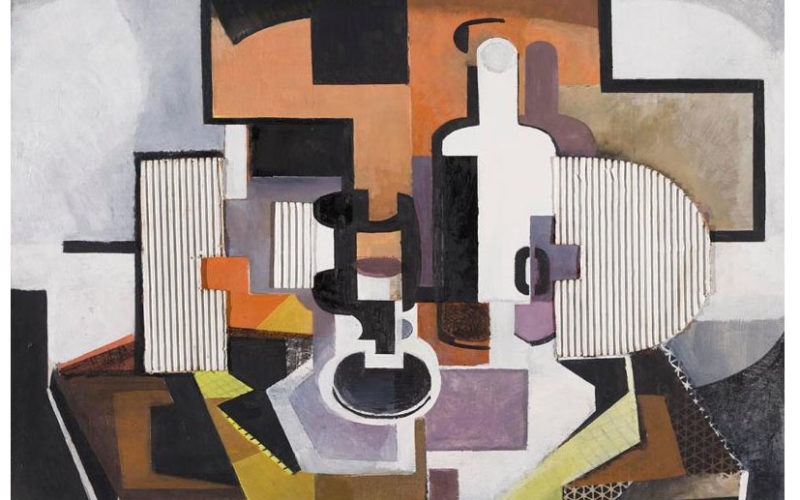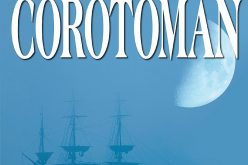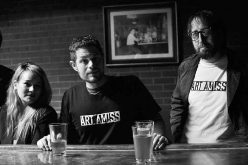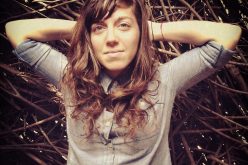JOCELYN MURPHY
jmurphy@nwadg.com
We here at What’s Up! are certainly just as bummed as you, dear reader, at the extended closure of one of our favorite museums, announced last week. Crystal Bridges Museum of American Art in Bentonville — and sister space the Momentary — have extended their closures through May 15 and canceled all on-site programming through the end of the month.
Luckily, however, we don’t have to be on site to enjoy exciting new art encounters. Crystal Bridges already has virtual reality video experiences for fan favorite pieces Asher B. Durand’s “Kindred Spirits,” Kerry James Marshall’s “Our Town,” and virtual tours of R. Buckminster Fuller’s “Fly’s Eye Dome” and the Frank Lloyd Wright Bachman-Wilson House on the property.
Next, the museum will release another installment in its virtual series, Suzy Frelinghuysen’s “Glass and Bottle” painting. Crystal Bridges’ Creative Director of Experimentation and Development Shane Richey answered these questions for What’s Up! ahead of the new video’s debut.
On creating a virtual experience with a painting:
Richey: All three of these were projects we had been working on since well before the museum closed. In a way, they’re all about access to these works — both for people who can’t be at the museum, but also for people who are at the museum but just want to look at them in slightly different ways. The first one we did, we published in 2018, was our “Kindred Spirits” painting. We did that at that time because the painting was going on loan; it was leaving the museum for the first time since we had opened in 2011. And it’s a very beloved painting at Crystal Bridges; a lot of people expect to see it when they come there.
So what we decided to do was is there a way that we can allow people to have a version of this experience or interaction they would have with the painting without it actually being here? What if we tried to create a way for somebody to really immerse themselves in the painting? Both figuratively and virtually, in this case. That’s something that the tour guides and the educators talk about on their tours a lot of times is, “Imagine yourself on that cliffside with these two figures in the painting.”

“This and several of the other things that we do in the gallery and online are to entertain or to really intrigue people into giving us enough of their time to communicate something more,” Shane Richey, the museum’s creative director of experimentation and development says of the museum’s expanding virtual reality offerings, like the newest venture into Suzy Frelinghuysen’s “Glass and Bottle” painting.
(Courtesy Image/Crystal Bridges Museum)
We started with the idea that it would not replace the experience of looking at the painting, but it would be something that would satisfy people who were disappointed [at “Kindred Spirits’” absence]. But what we found is that when people saw that video, either at the museum — we have it on a large touchscreen at the museum — or we also shared it out through YouTube, is that it heightened their interest in it. Once they saw the video, they then wanted to go see the painting. So we realized this wasn’t something we needed to do just when something wasn’t there, but it was something really valuable for us to continue to do
On the tech to make it happen:
Richey: We messed with a couple processes for that and ended up in what amounts to this kind of short video. It’s a 360 video, which we refer to it as VR, but it’s not the hard VR — the fully immersive, open world VR that a lot of people reserve that label for. It’s 360 video, but it’s done in a way that really mimics this virtual space that you are in.
We work with a production company in Bentonville called Prisma. We’ve worked with them very closely on several projects for several years now, and they’re incredibly good at what they do. So they’re doing really the heavy lifting — the production side, the photoshopping and preparing the files and doing all that. But before we get to that point, our process usually works with our curatorial and interpretations departments, and we’ll talk about how we want this video to unfold. We’re building this very rough script and this very rough storyboard in parallel so that we can make sure the script is developing in a way that’s actually doable from a video perspective.
From a technical standpoint, the VR videos are deceptively simple — at least in the mechanics and the concept. The building of them does take a lot of work because there’s a lot of tedious prep work and cutting out and layering and all that’s more involved, but in terms of how it comes together, it’s really pretty simple. The team at Prisma will go through and they’ll cut out all of the elements in the painting and turn them into what basically amounts to these paper dolls of figures and trees and landscape elements. And then they’ll expand that out using a range of programs, but mostly After Effects, which is a motion graphics software built for this exact type of thing. That software allows you to create a virtual 3D space on the stage there, and so these elements that they’ve cut out will be turned into like a shadow box, where the elements that are in the background are moved farther away into the back of the space and the foreground elements are closer to the front. And then from there, you can program a camera path through that space so that when the camera moves through, even though it is a flat, 360 video, this movement through this space creates this really effective feeling of actually being able to look farther out and see the trees.
On moving in the space:
Richey: In “Kindred Spirits” there’s a landscape with a cliff and there’s trees in the foreground, there’s a mid-ground, and background, and in “Our Town,” it’s the same — there are houses in the background, there’s trees and a lawn in the mid-ground, and children playing in the foreground. So that gives a very logical way to go through that space.
For the painting we’re working on now, the third one, Suzy Frelinghuysen’s “Glass and Bottle” painting, we picked that for a couple reasons, but one of those reasons was that she’s a Cubist painter — very abstract, very two-dimensional. There’s not a logical space. Not only was there not a logical space, but that was her intention was to really play with the ambiguity of form and how it portrays space. With abstract art, Cubism especially, there’s this idea that I think isn’t immediately obvious when you’re in the gallery, that, as the viewer, the artist is putting the responsibility on you a lot of times to interpret that work — to add to it. There is no right or wrong way to read the paintings. So we’re going to really mess with that and show the different ways to interpret that.
I think the “wow” moment in this one is going to be that flipping of perspective, and that may take a very large force of mental will to get your mind to flip from one perception of space to the other. We’ll be doing that for the viewer. Those will be some of the tricks that we’re developing for this that don’t necessarily serve the narrative that’s happening in the script, but I think it creates this element of fun and delight that makes it a little more engaging. Giving yourself space to have a little bit of fun with stuff always shows through to the audience. And as a museum that really embraces this idea of being welcoming and engaging and a fun place to be, that follows through into this type of project that this is something that’s a little more welcoming, maybe.
__
Go Online!
Explore all Crystal Bridges’ virtual offerings at https://crystalbridges.org/vr/±






